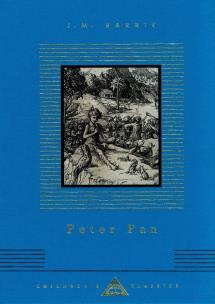- Regulamin
- Koszty dostawy
- Kontakt
- Dziś w ofercie 231 515 produktów
KSIĄŻKI
- Albumy
- Beletrystyka
- Biografie
- Dla dzieci i młodzieży
- Edukacja
- Ekonomia i biznes
- Ezoteryka
- Historia
- Informatyka
- Kalendarze
- Komiksy
- Kryminał i sensacja
- Kultura i sztuka
- Literatura faktu
- Literatura kobieca
- Literatura piękna
- Medycyna
- Nauka języków obcych
- Nauki humanistyczne
- Nauki przyrodnicze
- Nauki ścisłe
- Podręczniki
- Poradniki
- Prawo i administracja
- Przewodniki i podróże
- Psychologia
- Religia
- Sport
- Technika
- Zdrowie i uroda
ZABAWKI
- Artykuły dla niemowląt
- Bączki
- Bujaki i skoczki
- Ciągnij / pchaj
- Dla niemowlaka
- Grzechotki i gryzaki
- Karuzele i pozytywki
- Maty i centra zabaw
- Projektory i lampki
- Sortery i piramidki
- Zabawki
- Edukacyjne i kreatywne
- Figurki
- Klocki
- Lalki
- Pojazdy
- Pluszaki i maskotki
- Sport i rekreacja
- Zabawa w dom
- Zabawki drewniane
- Puzzle
- Do 200 elementów
- 201-500 elementów
- 501-1000 elementów
- Ponad 1000 elementów
- Puzzle 3D
ART. PAP
- Artykuły biurowe
- Artykuły piśmiennicze
- Bloczki i kartki samoprzylepne
- Dziurkacze
- Kalkulatory
- Nożyczki i nożyki
- Skoroszyty
- Teczki
- Wizytowniki
- Zszywacze
- Artykuły szkolne
- Akcesoria szkolne
- Modelowanie
- Notatniki i zeszyty
- Piórniki
- Plecaki i torby
- Pojemniki na śniadanie
- Pomoce naukowe
- Przybory matematyczne
- Przybory rysunkowe
- Upominki i gadżety
- Akcesoria do książek
- Artykuły balowe
- Breloki i zawieszki
- Drobiazgi, różności
- Kubki
- Oferta Świąteczna
- Papeteria, kartki i naklejki
- Skarpetki Many Mornings
- Upominki
GRY
MULTIMEDIA
- Audiobooki
- Beletrystyka
- Biografie i wspomnienia
- Dla dzieci i młodzieży
- Fantastyka
- Filozofia i religia
- Historia
- Literatura faktu i reportaż
- Poradniki
- Sensacja i kryminał
- Filmy DVD/BD
- Animowane
- Biograficzne
- Fantasy
- Horrory
- Komedie
- Romanse
- Science Fiction
- Sensacyjne / kino akcji
- Thrillery
- Muzyka CD
- Alternatywna
- Blues
- Dla dzieci
- Jazz
- Klasyczna
- Piosenka aktorska i poetycka
- Pop
- Rock
- Świąteczna i kolędy
- Akcesoria GSM
- Głośniki
- Kable i adaptery
- Klawiatury
- Myszy
- Słuchawki
PROMOCJE
ZDROWIE
LEGO

Peter Pan
Autor: James Matthew Barrie
Wydawca:
EVERYMANS LIBRARY
ISBN:
9781857159028
EAN:
9781857159028
oprawa:
Twarda
format:
16.0x21.0cm
język:
angielski
liczba stron:
236
rok wydania:
1992
(0) Sprawdź recenzje
Opis produktu
Zasady bezpieczeństwa
The Edwardian era was the Golden Age of childhood, of high adventure and fantasy, and home for tea in the nursery. Or not... The story of the boy who took the quest for untrammelled freedom to its utmost limits, who refused to grow up, could effortlessly fly, and who enticed three children from their comfortable Kensington home to fight redskins and pirates with him in the storyteller's paradise of Neverland ('Second to the right and then straight on till morning') is the anarchic product of its era; but more than a hundred years after Barrie's play opened in London, Peter Pan is performed regularly as a Christmas pantomime, as spellbinding now as it ever was, and TV documentaries continue to probe the nature of the relationship of author J.M. Barrie with the tragic Llewellyn Davies boys who inspired him. Wendy, John and Michael; Captain Hook, Smee, Starkey, Tinkerbell and the Lost Boys are part of our childhood consciouness. Not everyone who thinks they know Peter Pan has read it as Barrie wrote it, and adults too will enjoy the original text (published as Peter and Wendy in 1911) with its ironic presentation of the Darling ménage, its appreciation of the cruelty and carelessness of children and its amusing depiction of the villain Hook as an ex-public schoolboy obsessed with 'good form'. This funny, haunting modern myth appears in Everyman together with the wonderful illustrations of F. D. Bedford which accompanied the 1911 edition.
CENA:
54,26
zł
Cena detaliczna:
68,00 zł
20%
rabatu
Najniższa cena z ostatnich 30 dni: 35,35 zł
Produkt niedostępny
Uwaga!!!
Ten produkt jest zapowiedzią. Realizacja Twojego zamówienia ulegnie przez to wydłużeniu do czasu premiery tej pozycji. Czy chcesz dodać ten produkt do koszyka?


Wybierz wariant produktu
